At the intersection of safety and tragedy
December 2, 2010
On Feb. 12, 2008, a commercial fire broke out near Compton. A Los Angeles County fire truck rushed east along 135th Street toward the scene. Lights flashing, siren blaring, the truck was doing 35 mph when the light turned red at Figueroa Street. Firefighters thought everyone had stopped or pulled over. So, downshifting, the truck rolled through the intersection en route to the emergency.
They were mistaken. A catering truck had suddenly made a left turn into the fire truck’s path. In the back of the vehicle, court documents would later show, an $80-a-day cook named Antonia Roman had just finished warming tortillas for the next stop. Unrestrained by a seat belt, she was making her way back toward her passenger seat when the crash sent the catering truck careening onto its side.
Roman, a 43-year-old mother with a 6-year-old son still at home in Montebello, was thrown from the wreckage. When she regained consciousness, she was a paraplegic. The firefighter behind the wheel, meanwhile, would later discover that, in the course of a few years, the county’s policy for negotiating intersections on emergency calls had changed without his knowledge, requiring him to come to a full stop at the light, rather than to slow to a speed that was safe for the situation.
This week, the Board of Supervisors approved a $3.3 million settlement to Roman in the case.
The incident is significant, and not only because the injuries were so tragic and the settlement so substantial. It also highlights, once again, a complex, life-and-death question that public safety workers and policymakers deal with every day: What is the safest, best way for the driver of an emergency vehicle to negotiate an intersection when lives are in the balance?
In 2008, the last year for which statistics are available, there were 340 collisions involving emergency vehicles on Code 3 calls in California, 116 of them at intersections, according to the California Highway Patrol. The collision that crippled Roman was one of 36 involving emergency vehicles in Los Angeles County intersections that year.
Although the law is clear for civilian drivers—when an emergency vehicle approaches, you stop or pull over and yield the right-of-way—answers are not as definitive for those on the other side of the lights and sirens.
The California Vehicle Code exempts emergency vehicles en route to 911 calls—fire trucks, ambulances, police cars, etc.—from many rules of the road, including those involving red lights. The sole stipulation is that that the vehicle be driven at a speed that’s safe for the road conditions and “with due regard for the safety of all persons using the highway.”
Within those parameters, however, policies vary among agencies and jurisdictions when it comes to balancing the urgency of the call against the need for safety.
“The law says you have to clear the intersection—you can’t just blow through it,” says California Highway Patrol Executive Lt. Kevin Gordon. “You have to make sure it’s safe to proceed and that other motorists are aware of your presence. But there are variances in how best to implement that.”
The policy of the Los Angeles City Fire Department, for instance, is to “stop at all red lights and stop signs . . . and when safe, proceed through the intersection with caution.” The Pasadena Fire Department’s policy does not spell out whether a full stop is required when entering an intersection against a red light. However, the department’s emergency response procedures list “driving against traffic lights” as one of a series of conditions that require “reduced speed and extra caution.”
The county’s policy, meanwhile, has gone back and forth in its attempt to maximize safety, from a 2000 policy that instructed drivers to “slow to a speed which would allow observation of approaching vehicles and pedestrians” to the policy in force at the time of the collision, which told drivers to “stop at all signal controlled intersections that display a red light . . .”
Since then, the policy has again been updated, requiring that the driver simply apply the law with caution and “clear the intersection, lane by lane, until all traffic has yielded the right of way.”
An overview presented to the Board of Supervisors in connection with the Roman case suggests that those shifts may have been confusing. Listed among the factors that “gave rise to [the] accident” was a “failure to be aware of and adhere to the current Department driving policy” on the driver’s part, and a similar failure by his captain to make him aware of the policy.
“We’re trying to learn from what happened,” says Los Angeles County Fire Chief P. Michael Freeman. The challenge, he says, is in balancing the need for swift, potentially life-saving emergency response with the need to navigate traffic safely as public safety workers rush to deliver help.
Traffic safety is crucial, he says, but bringing a heavy truck to a full stop and then getting it up to full speed again takes time when every moment counts. What’s more, he says, stopping at an intersection may confuse other drivers about whether they should stop, go or look for flames around them.
Says the chief: “It’s a question of what’s safest for the public and what’s safest for the people on the other end of the 911 call we’re trying to get to.”
Posted 12/2/10
A five-year plan to end homelessness
December 1, 2010
A growing number of business and political leaders in Los Angeles are rallying behind a plan that boldly promises to end chronic homelessness within five years—a plan that on Wednesday got an announced boost of $13 million from the Conrad N. Hilton Foundation.
The plan, Home For Good, calls for a sweeping reorientation of strategies and expenditures in Los Angeles County for the chronically homeless and military veterans living on the region’s streets. The goal is to provide permanent, rather than temporary, housing to these individuals, who would then immediately have access to a stream of health and mental health services to help them restore their lives.
At the same time, according to the plan, taxpayers would be saved millions of dollars now being spent by the criminal justice and emergency health care systems to cope with the county’s huge homeless population.
“We need to shift the paradigm away from a system that has been cumbersome and confusing to an efficient system focused on finding people homes,” states the report, a joint initiative of the United Way of Greater Los Angeles and the Los Angeles Area Chamber of Commerce.
This model, known as “permanent supportive housing,” has taken root in cities across the nation, including Los Angeles, where a program called Project 50 on Skid Row has shown dramatic results.
At an event on Wednesday to publicize the Home For Good action plan, a number of Los Angeles’ top officials were on hand, including Mayor Antonio Villaraigosa and Supervisor Zev Yaroslavsky, who initiated Project 50 and has backed its replication throughout his district and beyond.
During his remarks at the gathering, Yaroslavsky said that Home For Good “sets the record straight” that permanent supportive housing is the most effective approach to helping individuals who’ve been identified as the most likely to die on the streets.
Once these people are in a home—and a trusting relationship has been established—“we can open their minds and their hearts to the treatment they need, the services they need, so they can function in our society,” Yaroslavsky said. “In order to end homelessness, we’ve got to provide a home.”
Yaroslavsky’s comments were indirectly aimed at critics of the housing first approach, who argue that homeless individuals should not be given publicly supported residences unless they’re first receiving mental health care and substance abuse treatment.
That is not, however, the prevailing attitude among the unprecedented coalition of elected officials, business leaders, philanthropists, religious leaders and housing advocates who’ve endorsed the United Way/Chamber of Commerce initiative.
Permanent supportive housing also is the favored approach of the Obama Administration, as was made clear on Wednesday by Barbara Poppe, executive director of the U.S Interagency Council on Homelessness. She said the Home For Good blueprint could open the door to more federal funding. “It’s not enough to plan,” she said. “It’s only enough if we act.”
Los Angeles County Supervisor Mark Ridley-Thomas agreed, saying: “We must turn Home For Good into action. Measurable results, in the final analysis, is what matters.”
To help ensure that action, Steven M. Hilton announced that the Hilton Foundation would provide $13 million in grants, spread across three years, to fund key components of the campaign. The approach advocated by Home for Good “restores stability, autonomy and dignity and helps the individual integrate back into the community,” said Hilton, president and CEO of the foundation.
Hilton said that $9 million of grants will be given to the Corporation for Supportive Housing to spur the creation of 2,500 new permanent supportive housing units; $3.6 million will be used to identify and house 4,500 of the most vulnerable people on the streets. The rest will be distributed to other non-profit and faith-based efforts on behalf of the chronically homeless.
He called Los Angeles’ homeless problem “shameful,” and said that the homeless man on the street is “somebody’s son, father, brother. In effect, they’re one of us.”
Posted 12/1/10
Ten picks for an L.A.-style holiday
December 1, 2010
Hard times, bad moods, gnarly voters – some years just cry out for a dose of California mellow, for an “only-in-L.A.” kind of holiday.
So how about a “Hollywood Bowl” to hold your La Brea Bakery granola? Or maybe a beach towel that will, er, knock ‘em dead at Venice Beach next summer? Or a zen-like little slice of West Coast art in your stocking, inviting you to dispel your toxins with beauty and purity?
We took an online stroll through a half-dozen or so of Los Angeles County’s public gift shops as the wrapping paper officially starts flying. Then, just for good measure, added a handful of other cool local museum stores. Turns out they’re not only a way to support L.A.s great civic institutions, but also an invaluable source for California-style holiday dreamers. Here are some of our favorites:
1.  We felt cleansed just looking at this “Pure Beauty” soap from the Los Angeles County Museum of Art gift shop. Inspired by West Coast conceptual artist John Baldessari , it’s scented with ginger and lavender.
We felt cleansed just looking at this “Pure Beauty” soap from the Los Angeles County Museum of Art gift shop. Inspired by West Coast conceptual artist John Baldessari , it’s scented with ginger and lavender.
2.  How cute are the La Brea Tar Pits? Pretty cute this season. The Los Angeles County Natural History Museum is celebrating its resident celebrity, the sabre-toothed cat, with plush Smilodon Cuddlekin, for kids and other holiday snugglers.
How cute are the La Brea Tar Pits? Pretty cute this season. The Los Angeles County Natural History Museum is celebrating its resident celebrity, the sabre-toothed cat, with plush Smilodon Cuddlekin, for kids and other holiday snugglers.
3.  Randy Newman loves L.A. so much he wrote a song about it, which you can hear all this month in “Randy Newman’s Harps and Angels,” the great new show at the Mark Taper Forum. Gift cards for The Center Theatre Group – that’s the Ahmanson, Taper and Kirk Douglas Theatres for you non-Angelenos – are available online, with free gift wrap! We love it!
Randy Newman loves L.A. so much he wrote a song about it, which you can hear all this month in “Randy Newman’s Harps and Angels,” the great new show at the Mark Taper Forum. Gift cards for The Center Theatre Group – that’s the Ahmanson, Taper and Kirk Douglas Theatres for you non-Angelenos – are available online, with free gift wrap! We love it!
4. 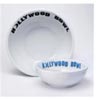 The L.A. Phil won’t be back at the Hollywood Bowl for a few months, but you can fill this cool bowl as often as you want, and even put it in the oven or the microwave.
The L.A. Phil won’t be back at the Hollywood Bowl for a few months, but you can fill this cool bowl as often as you want, and even put it in the oven or the microwave.
5. 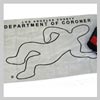 Killer beach towels are always in season, and where better to look than the Los Angeles County Coroner’s gift shop, Skeletons in the Closet? Their chalk-outline beach towels are generous-sized and a perennial favorite, but the store restocks every few weeks, so if they’re out of stock, keep checking.
Killer beach towels are always in season, and where better to look than the Los Angeles County Coroner’s gift shop, Skeletons in the Closet? Their chalk-outline beach towels are generous-sized and a perennial favorite, but the store restocks every few weeks, so if they’re out of stock, keep checking.
6.  The gift shop at the Los Angeles County Arboretum & Botanic Garden in Arcadia doesn’t have much in the way of online shopping, but if you buy a membership as a gift for yourself or a loved one, you get discounts there and at nurseries all over Southern California. Poinsettias have never been prettier!
The gift shop at the Los Angeles County Arboretum & Botanic Garden in Arcadia doesn’t have much in the way of online shopping, but if you buy a membership as a gift for yourself or a loved one, you get discounts there and at nurseries all over Southern California. Poinsettias have never been prettier!
7. 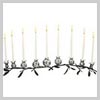 This pomegranate menorah evokes not only the holiday season, but also a fruit that is one of the winter hallmarks of L.A. Find it at the Museum of Tolerance Gift Shop.
This pomegranate menorah evokes not only the holiday season, but also a fruit that is one of the winter hallmarks of L.A. Find it at the Museum of Tolerance Gift Shop.
8.  Before she was an artist with shows at the Getty and a faculty gig at CalArts, Jo Ann Callis was just another ‘60s housewife trying to get through the holidays in suburban L.A. We couldn’t resist these porcelain dessert plates from The Getty Museum Store, bearing her signature images of subverted domesticity.
Before she was an artist with shows at the Getty and a faculty gig at CalArts, Jo Ann Callis was just another ‘60s housewife trying to get through the holidays in suburban L.A. We couldn’t resist these porcelain dessert plates from The Getty Museum Store, bearing her signature images of subverted domesticity.
9.  Nothing says Christmas in California like bright colors and extreme takes on religion. R. Crumb, a Golden Stater for much of his career, brings it home with his illustrated “Book of Genesis”, available at the Hammer Museum Store.
Nothing says Christmas in California like bright colors and extreme takes on religion. R. Crumb, a Golden Stater for much of his career, brings it home with his illustrated “Book of Genesis”, available at the Hammer Museum Store.
10.  Ed Ruscha , the quintessential L.A. artist, summed up the quintessential L.A. attitude when he created this art object for the Los Angeles Museum of Contemporary Art’s 30th anniversary. Talk about a New Year’s resolution.
Ed Ruscha , the quintessential L.A. artist, summed up the quintessential L.A. attitude when he created this art object for the Los Angeles Museum of Contemporary Art’s 30th anniversary. Talk about a New Year’s resolution.
Posted 12/1/10
More than just the facts, ma’am
December 1, 2010
Where have you gone, Sgt. Friday?
Law enforcement communication, once a bastion of deadpan, just-the-facts accounts, is entering a new era in Los Angeles.
And not a moment too soon for Sheriff’s Captain Mike Parker. His agency, along with the LAPD and some others in the county, is an enthusiastic early adopter of Nixle–a direct communication service that beams official news dispatches instantly by email or cell phone text message.
Originally intended as a mass emergency alert system, Nixle has quickly evolved as well into a way for authorities to pass on information about everything from how to find a bathroom at the Lakers’ victory parade to how to avoid a ticket for parking overnight on the street during the holidays. Detectives with missing persons cases have turned to Nixle to get the word out quickly to thousands of potential witnesses.
And agencies, once dependent on a media middleman to carry their messages, are suddenly speaking directly and instantaneously to the public. In the process, some time-honored conventions of the press release are getting a makeover, with attention-grabbing headlines, colorful quotations and even a little up-close-and-personal storytelling.
“We don’t want to do salacious,” says Parker, who’s leading the charge to train sheriff’s officials in using the new system. But there’s nothing wrong with zeroing in on “What is unique about this? Convince me to open this email.”
“You tell a story,” Parker says. “You don’t have to be a tabloid.”
This week, for example, an item went out from the sheriff’s Century Station under the headline “Crossing Guard Beaten & Robbed of Stop Sign and Whistle in Front of 20 Schoolchildren & Adults. 2 suspects arrested.”
The accompanying narrative told the tale of a plucky crossing guard standing up to two suspects in a black Ford Expedition who were trying to push through her intersection without stopping. “The crossing guard raised her stop sign higher in the air and told the suspects, ‘You have to stop, the children come first.’ “
According to the Nixle account, the suspects responded by swiping her stop sign, grabbing her lanyard and whistle and knocking her to the ground. They were arrested nearby and the crossing guard, who had only minor injuries, went home.
That left Lieutenant Mike Thatcher of Century Sheriff’s Station with the last word–a classic “kicker” quote that would not seem out of place in a news story: “We have never seen anything like this before and hope we never do again.”
The LAPD and the sheriff’s department–which together reach about 80,000 subscribers who’ve signed up for the free service–report that Nixle usage increases during a major news event, like the Crown Fire near Palmdale in August.
Sheriff’s Deputy Bob Boese, who’s helping to train his colleagues on how to take advantage of Nixle, says the system is valuable in conveying both “local, local, local” information and the really big stuff.
“The goal is to get every Los Angeles County resident to sign up for Nixle, so that in the event of a catastrophe, we can provide information directly to their cell phones,” Boese says.
Sheriff’s officials say using Nixle helps make good on Sheriff Lee Baca’s pledge of openness and transparency.
“In addition to transparency, we’re providing a sense of community,” Boese says.
Over at the LAPD, Lt. John Romero calls Nixle “a game-changer for the region.” His agency has used it as a secure internal communications system during events like awards shows as well as for specific happenings like the Lakers parade and a hotel evacuation after an explosion.
In an email, he said he expects the system to become “a major success story” as its audience grows. (Those who wish to sign up for Nixle start by registering their email address and setting up a password. Once signed in, people can adjust their settings to receive alerts from as many agencies as they like, which range from the tiny South Pasadena Police Department to the 405 Sepulveda Pass Improvements Project. Those who want to receive text alerts only can text their zip code to 888777.)
The sheriff’s department’s no-cost contract with Nixle was approved by the Board of Supervisors in June. The company’s business model calls for it to begin charging other agencies for its “enterprise software” in the future. It also is planning to go to market with a specialized mobile device that agencies could use for for a variety of communication needs. Nixle will remain free for the public to receive alerts–although, depending on their phone plan, they may have to pay standard text-messaging rates. The New Jersey-based company says more than 4,000 agencies across the county now are using Nixle to reach some 500,000 subscribers.
Parker, who has a degree in finance, says that learning to make the most of Nixle’s communications potential is important for many in his department because they never received such training working on a school newspaper, for example.
“I have yet to meet a cop who, when he was in high school, was thinking, ‘I want to be a public information officer for the sheriff’s department,’ “ Parker says. He tells them, “Were not trying to make you into reporters. We want you to be accurate. Don’t be salacious. Don’t be inflammatory…A balanced statement about what really happened–we’re trying to get it out there.”
For Parker personally, new tools like Nixle and the sheriff’s recently revamped website represent more than just technological progress. They’re also a chance to hold his head up a little higher at family get-togethers.
“My entire family is in marketing. In my family, you’d better be able to tell a good story or people make fun of you. If you sit there quietly, they make even more fun of you.
“They’ve been laughing at me for years at how lame the sheriff’s department was at marketing itself.”
This year, he’ll be the one laughing.
Posted 12/1/10




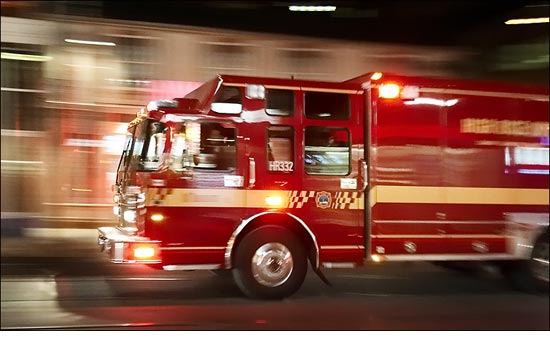
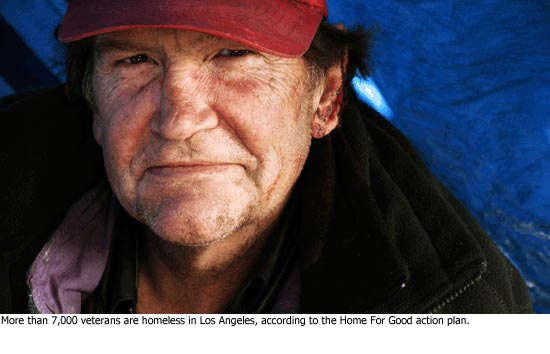
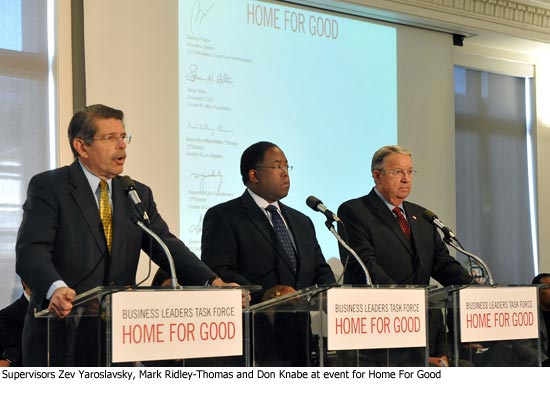

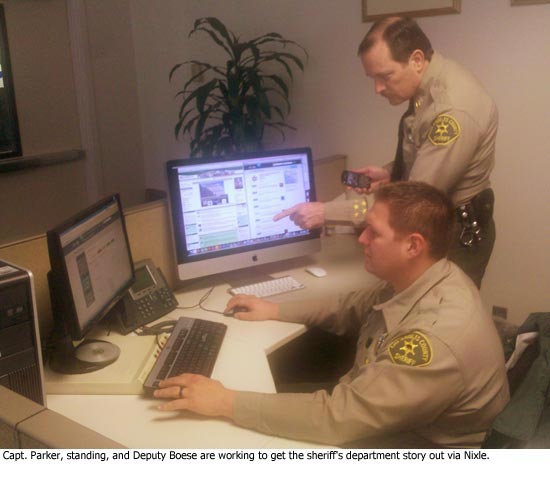





 Check for the latest closure information
Check for the latest closure information








